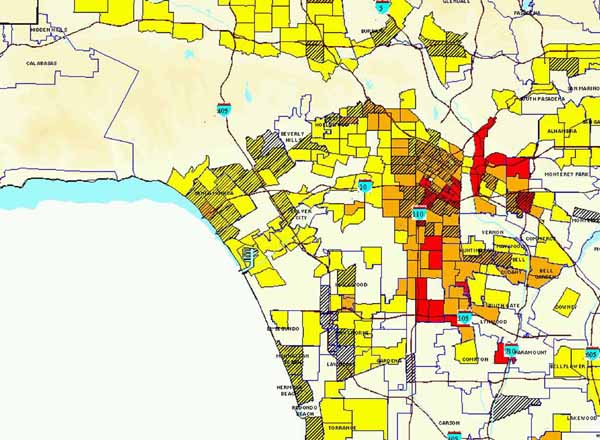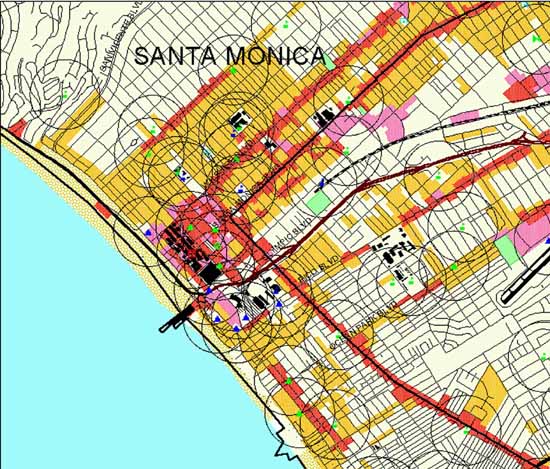
I. Introduction
People know what conditions they want to live, work, and raise their families in. That's what developers want to bring to market. The problem is that livable communities can't just be plopped down and be successful.
Livable communities evolve out of a wealth of existing resources--good schools, safe and convenient shopping areas, neighborhood services, health and fitness facilities, transit services among others. Unfortunately developers shy away from projects within established communities because of opposition due to traffic and other environmental impacts.
II. The Ped-GRiD Solution
Pedestrian are the key measure of a livable community. When the pedestrian potential of a place is maximized, development projects become more market viable, potential traffic and environmental impacts are addressed, and each project becomes a community asset.
The way we do this is through our Pedestrian Geographic Resources Database or Ped-GRiD which digitally compiles, analyzes and maps information contained in data sets.
III. Southern California Model


Ped-GRiD is a powerful engine for querying through all these specific bits of information to discern the places throughout the region with the greatest potential for becoming a livable community.
Zooming in to the parcel and block level, the same methodology can be applied to select the best sites for specific development projects. We can analyze information such as property size and area, land use and density, property value for any group of blocks or for individual street addresses.
The Plan recommends implementation through a regional Pedestrian Enhancement Program called SCAG/PEP. It provides subregions and local agencies with opportunities to undertake enhancement projects managed by SCAG's ACCESS program and funded through ISTEA and other sources.
SCAG/PEP calls for the development of Local Pedestrian Enhancement Plans (Local/PEP) by local agencies and submitted to SCAG for funding through a competitive process. The Local/PEPs will be judged upon how well they meet and implement the goals and objectives established by SCAG/PEP.
The Local/PEPs should establish improvement projects in Pedestrian Enhancement Precincts. Local/PEPs should identify the inhibitors of good pedestrian movement and demonstrate how these may be overcome through proposed Pedestrian Enhancement Strategies. Local/PEPs should provide an overall Pedestrian Enhancement Vision established through a community participation process.
A range of potential funding sources at federal and state levels are identified and may be allocated to local agencies by SCAG subregions. A SCAG/PEP management program is recommended to utilize the existing SCAG ACCESS program.
IV. Conclusion
Ped-GRiD is a powerful tool for identifying which locations have the least potential for success therefore giving developers an edge in minimizing their risk.
V. Acknowledgements
V. Principal Author Information